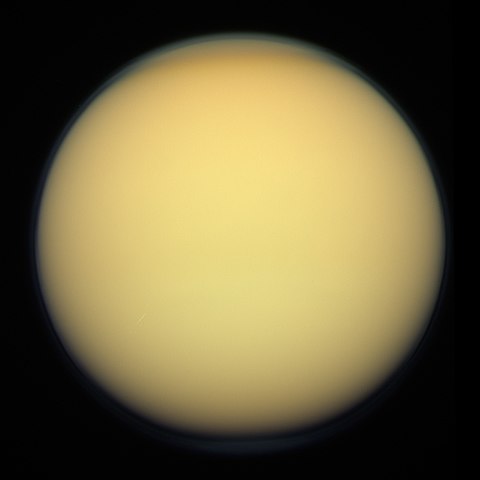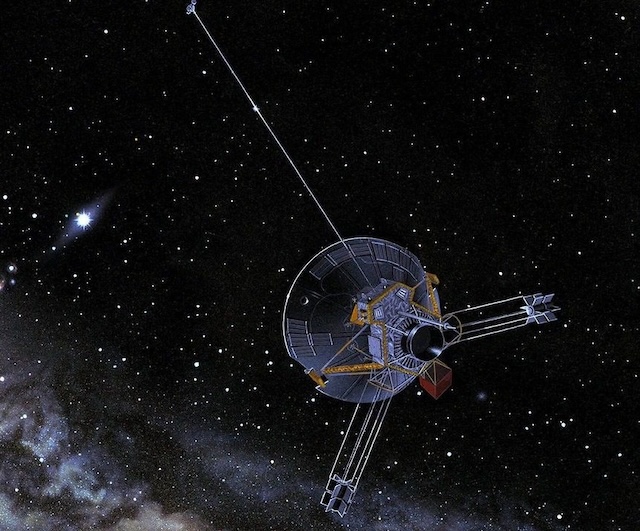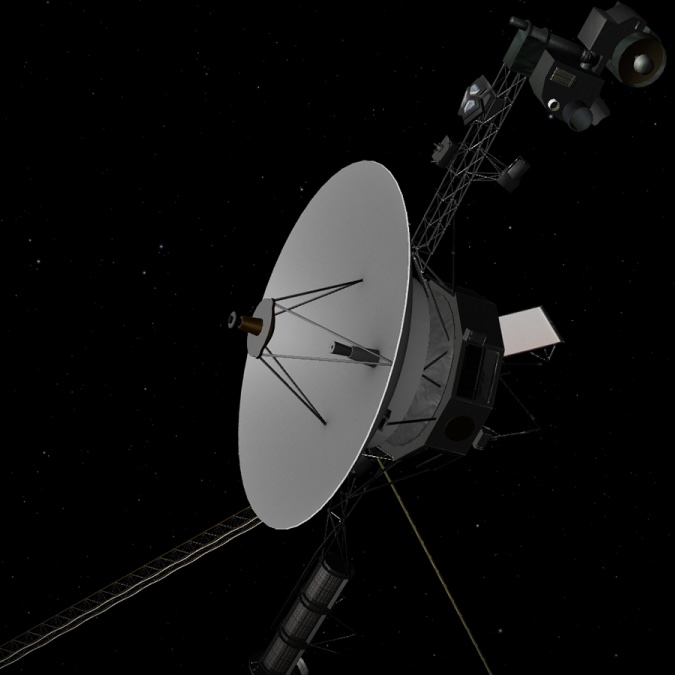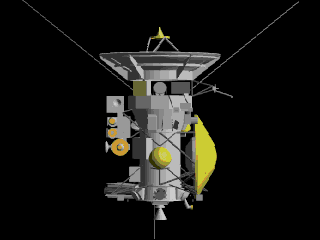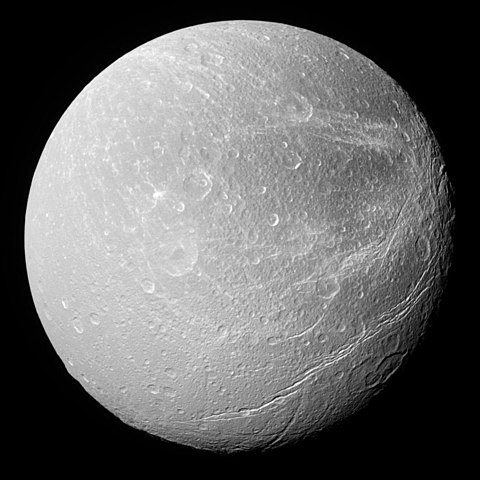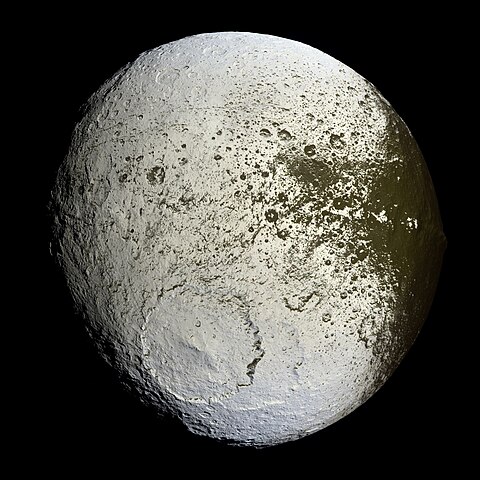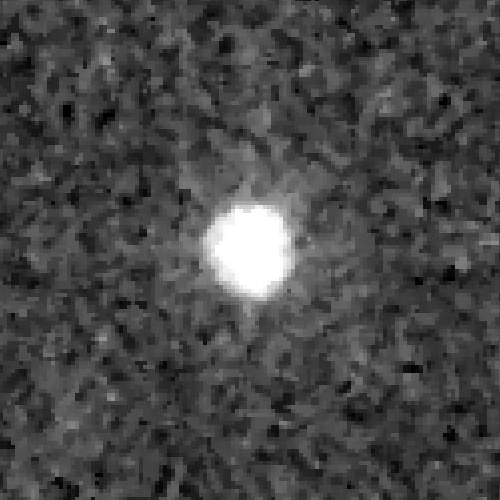1 day / second
0.5 AU
Titan
Moon of Saturn
Saturn's largest moon and the only moon known to have a dense atmosphere, Titan features lakes and seas of liquid methane, a thick nitrogen-rich atmosphere that creates an orange haze, and conditions that may resemble those of early Earth.
Key Facts
learn more | Wikipedia |
mass | 1.3452e+23 kg |
radius | 2,574.7 km |
semi-major axis | 1,221,870 km |
eccentricity | 0.029 |
inclination | 27.079º |
longitude of the ascending node | 0º |
argument of periapsis | 0º |
orbital period | 15.948 days |
surface gravity | 0.138 g |
discovery date | March 25, 1655 |
discovered by | Christiaan Huygens |
name origins | Named after the Titans of Greek mythology |
density | 1.88 g/cm³ |
albedo | 0.22 |
material composition | Rocky core with layers of ice and liquid hydrocarbons |
rotation | Tidally locked to Saturn |
Gallery

Parent Planet
Saturn
A massive ringed gas giant with a distinctive yellow-orange hue, known for its extensive system of icy rings and more than 80 moons, including Titan, the only moon in the Solar System with a thick atmosphere.
Spacecraft Visits
Pioneer 11
Flyby
Launched in 1973, visited in 1979
Pioneer 11 made distant observations of Titan during its Saturn flyby on September 1, 1979, measuring the moon's surface temperature and helping confirm the presence of its thick atmosphere.
Voyager 1
Flyby
Launched in 1977, visited in 1980
Voyager 1 made the first close flyby of Titan on November 12, 1980, revealing the moon's dense atmosphere and capturing detailed images of its orange haze while passing within 4,000 kilometers of its surface.
Voyager 2
Flyby
Launched in 1977, visited in 1981
Voyager 2 made a distant flyby of Titan on August 25, 1981, passing at a distance of 665,960 kilometers and capturing hundreds of images of the moon's thick orange atmosphere.
Cassini
Flyby
Launched in 1997, visited in 2004
During its first of many flybys of Saturn's largest moon on October 26, 2004, Cassini passed within 1,200 kilometers of Titan's surface, using its array of instruments to peer through the moon's thick atmosphere and capture unprecedented data about its surface features.
Huygens
Lander
Launched in 1997, landed in 2005
After a seven-year journey as part of the Cassini mission, Huygens became the first spacecraft to land on Titan on January 14, 2005, transmitting 2.5 hours of atmospheric data and surface images during its descent and landing in the moon's equatorial region.
